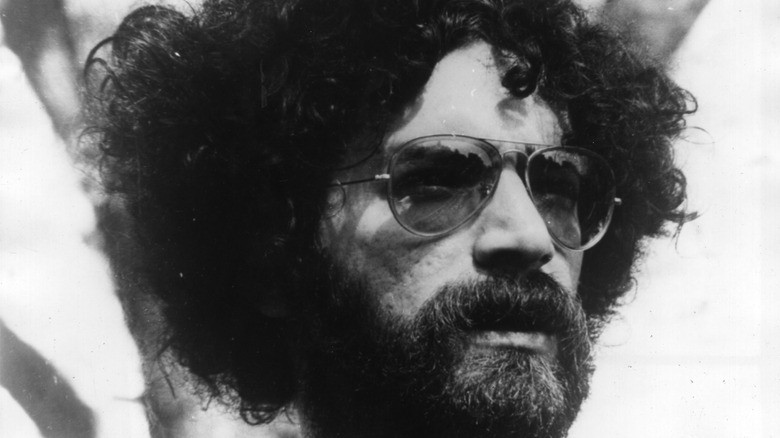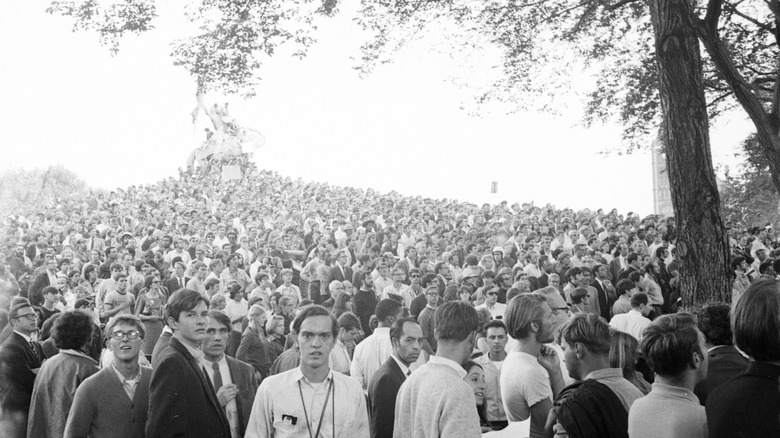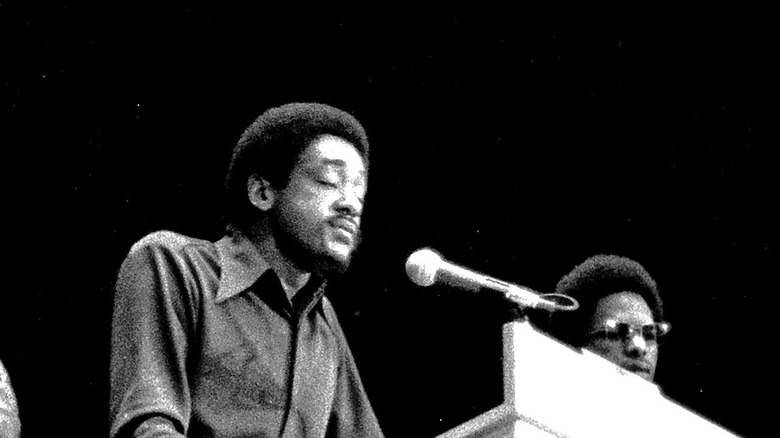Why The Chicago Seven Was Originally The Chicago Eight
The U.S. in the 1960s was a period of staunch activism. During that decade, the country saw a rise in rapid social and political movements. One of the most significant fights to come out of that era was the Civil Rights movement, but so did another major campaign, which came as a result of the Vietnam War. The war started in 1955, but the anti-war movement was another growing sentiment in the late '60s. It sparked a lot of division, the opposition against it was loud, and even celebrities were vocal about their disapproval, most notably Muhammad Ali and Jane Fonda.
No previous conflict had divided Americans such as the Vietnam War (per History). It all began on college campuses, and then blew into a national movement. Nearly every major American city had an organized protest against the war, and one of those cities was Chicago. In late August 1968, the Democratic National Convention (DNC) was set to be held there, and what better way to get the anti-war message across than to protest to a presidential hopeful and urge politicians to support the call to pull from Vietnam?
The Chicago eight
That is exactly what happened when organizers planned to protest the convention on August 28, reports another History article. A large crowd of thousands gathered near the General John Logan Monument (pictured above in background) on Michigan Avenue to rally (posted on YouTube). Police had already been deployed in expectation of the number of the protesters that day. But things went awry. Cops used force and clashed with the demonstrators. What was supposed to be a nonviolent protest quickly turned violent as the world watched (via Chicago History). By the end of the ordeal, 219 people were hurt, and police arrested 589 protesters, says PBS.
Several months after the protests, it was a new year. The country was still at war and had a new leader with President Nixon. Yet, in March 1969, a Chicago grand jury indicted eight men for conspiracy of crossing state lines to incite a riot at the DNC, reported Time Magazine. These men were David Dellinger, Rennie Davis, Tom Hayden, Abbie Hoffman, Jerry Rubin, Lee Weiner (featured in top image), John Froines, and Bobby Seale — all organizers and activists of different anti-establishment organizations, who supported the anti-war movement. They subsequently became known as the Chicago Eight.
And then there were seven
On September 24 their trial began. But during the trial proceedings, Bobby Seale (pictured), the co-founder of the Black Panther Party, apparently kept interrupting the judge and swearing at him. His protest: He didn't want the lawyer he had and wanted to represent himself. But Judge Julius Hoffman didn't agree and ordered that Seale be chained to his seat and gagged, per Constitutional Rights Foundation. Still, that didn't stop a fearless Seale who continued to attempt to speak in court while gagged. His disruption apparently became too much, and the judge decided that Seale was going to be tried separately. Seale was charged with contempt and ended up with a four-year sentence, and the Chicago Eight then became the Chicago Seven.
The trial for the remaining seven men moved along, ending with an acquittal of conspiracy charges on February 18, 1970. But the jury found five of them (Dellinger, Davis, Hayden, Hoffman, and Rubin) all guilty of riot charges, says Britannica. The next day they were fined and sentenced to five years but after appealing and citing Judge Hoffman's bias and conduct during the trial, an Illinois appellate court overturned their convictions, per Federal Justice Center. Seale's case was also dropped. All the men went on to continue their activism, and Hayden notably married Jane Fonda, a prominent vocal critic of the Vietnam War. The only living of the Eight (or Seven) are Seale, Weiner, and Froines.


